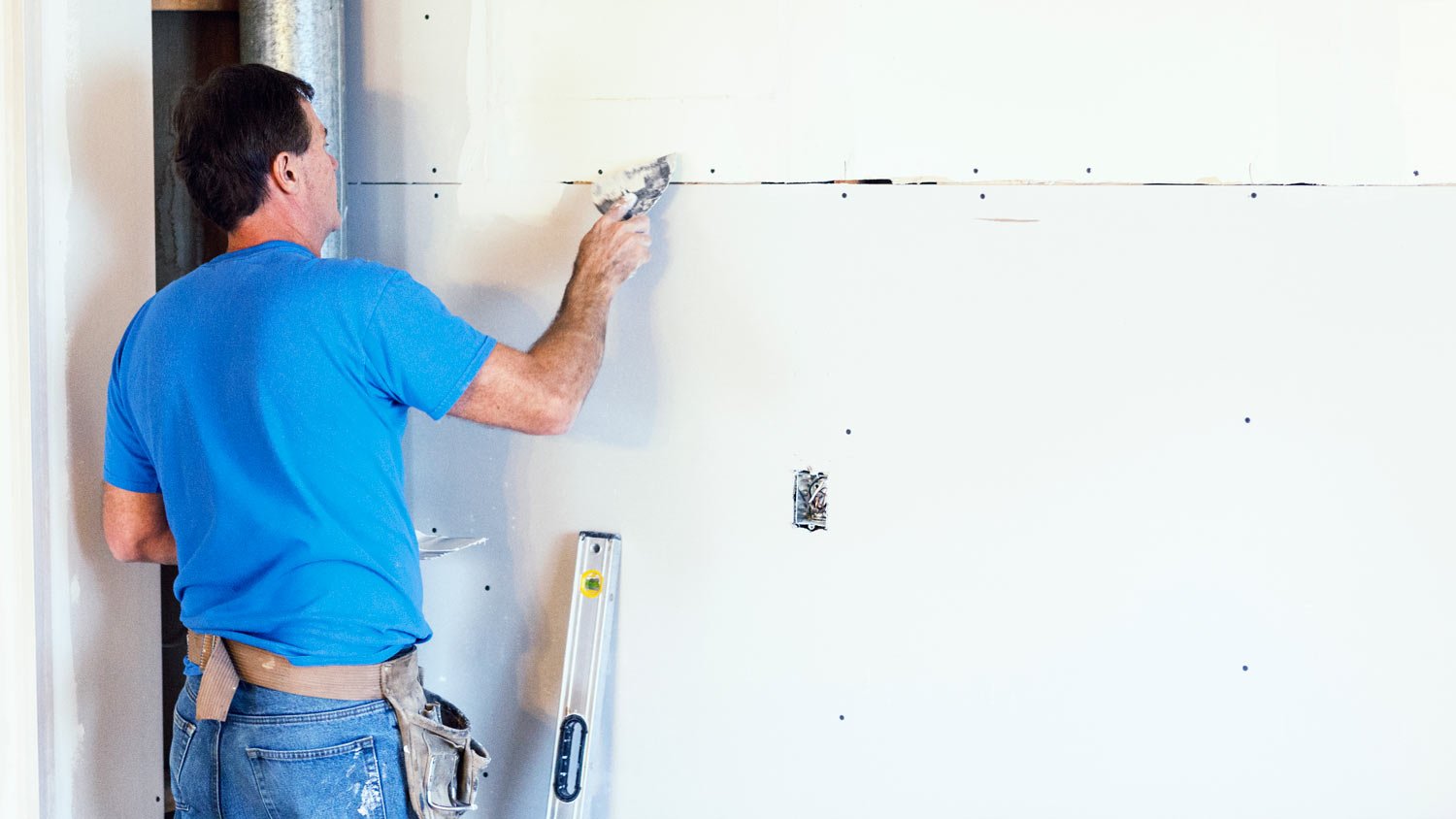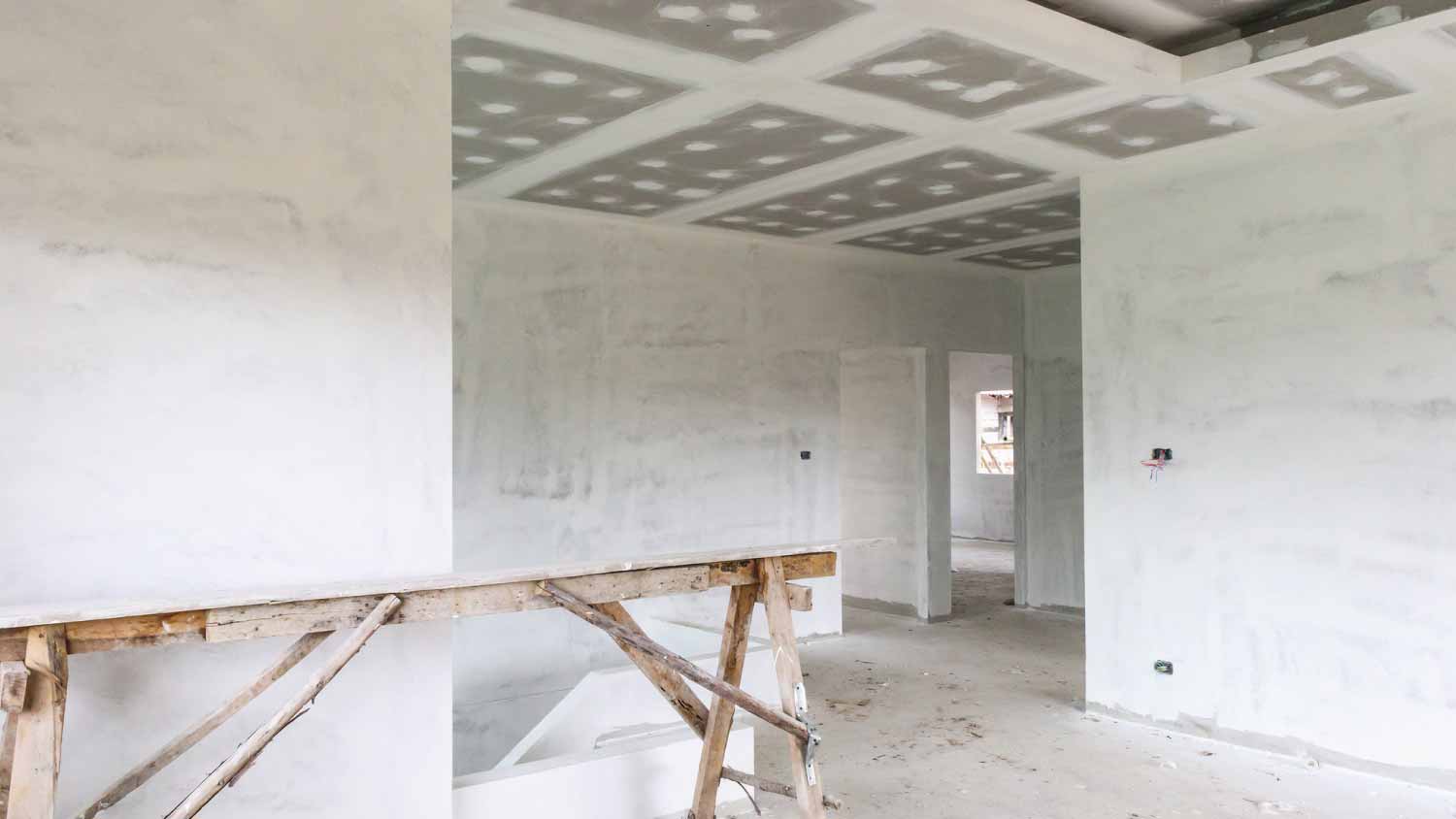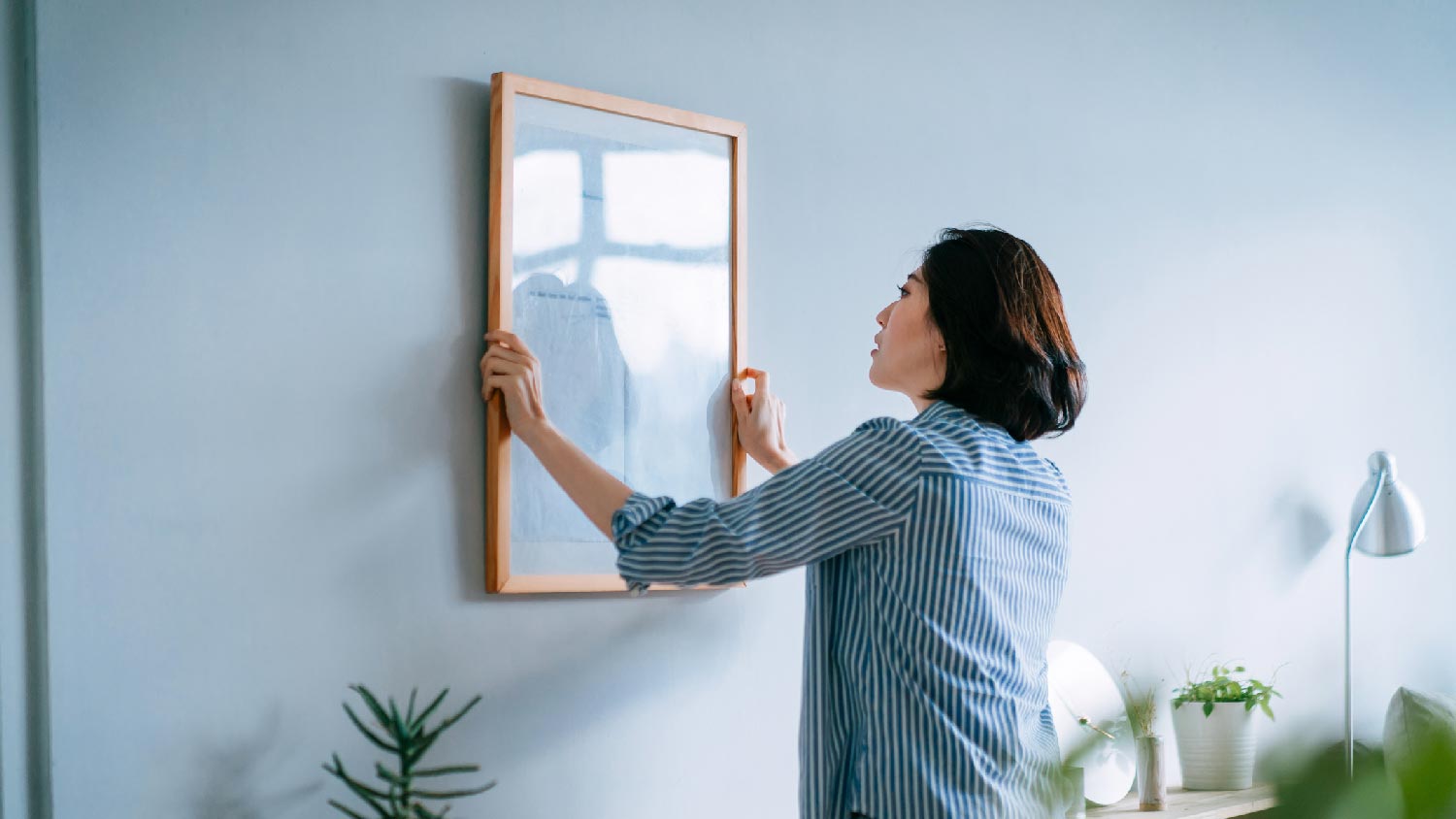How to Drywall Corners for a Seamless Finish
There’ll be no ridges, lumps, valleys, or bumps in your drywalled corners
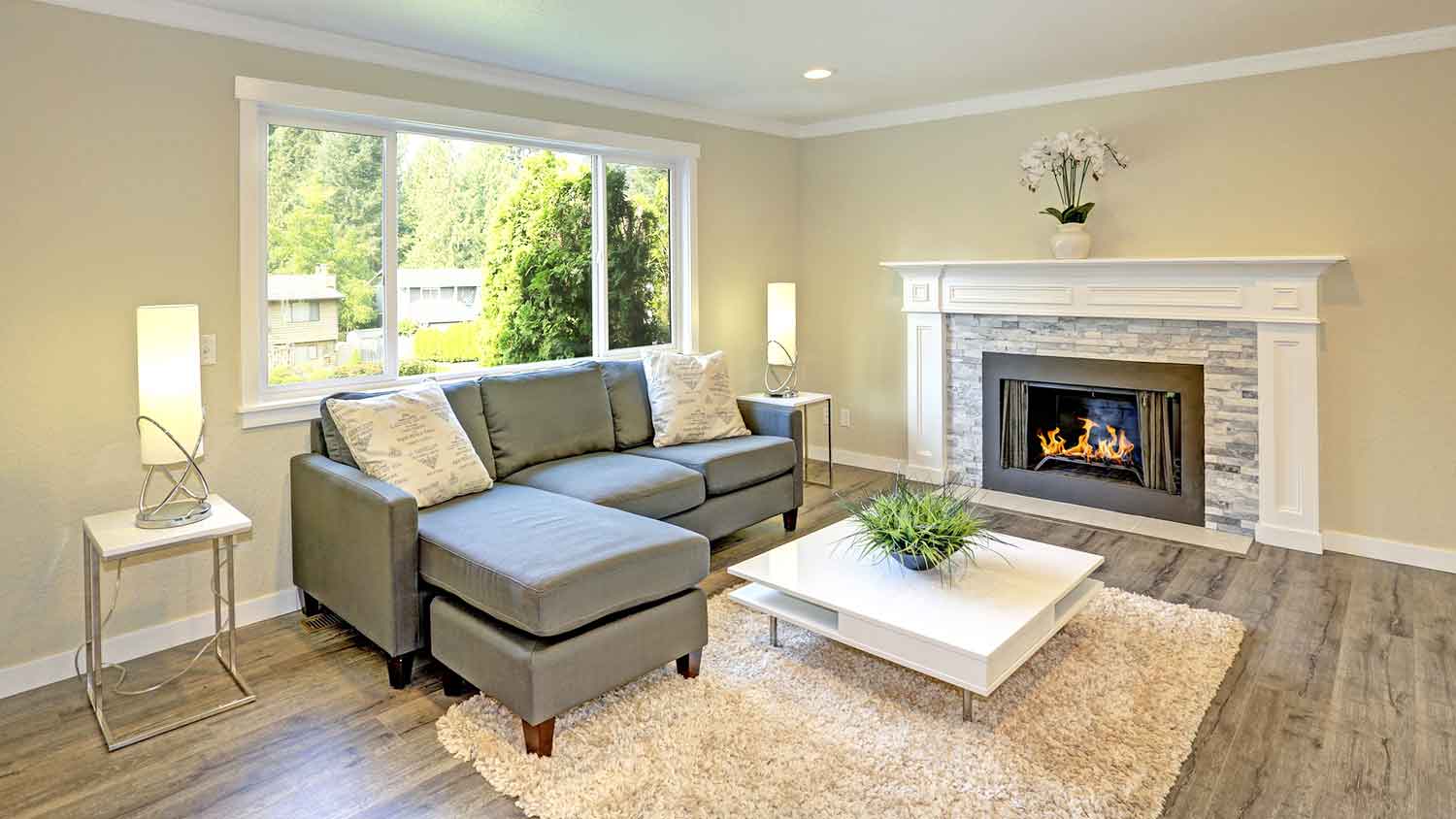

This project can take a long time to complete if you’re doing it in your off-time. Hiring a pro ensures a job done well and a quicker turnaround—plus you get your weekends back.
- Measuring tape
- Pencil
- Work gloves
- Goggles
- Utility knife
- Drywall sheets
- Drywall screws
- Drywall tape
- Joint compound
- Sanding block or screen
Your living room upgrade is moving along, with most of the drywall up and nearly ready for paint. But it’s time to install and finish the drywall along the corners of the room. Corners can be especially tricky to finish because it’s easy to drag or dent the joint compound and leave behind an uneven finish. Here’s how to drywall corners for a smoother look.
Measure the Space—Twice
 Photo: AleksandarNakic / E+ / Getty Images
Photo: AleksandarNakic / E+ / Getty ImagesThe old saying to measure twice, cut once is especially true when it comes to installing drywall. Be sure to measure the amount of space in the corners you have left, and measure for any outlets, doors, or other openings you’ll need to leave in the drywall sheets. Mark where you’ll cut on the drywall sheets using pencil.
Cut the Drywall
With the measurements confirmed, you can cut the drywall to the appropriate size using a sharp, new utility knife to score and cut each sheet. You can also use a drywall saw or oscillating saw to cut the drywall sheets.
If you want to install plastic behind moisture-resistant drywall or another vapor barrier, do that now before installing the drywall.
Screw Drywall Into Framing
 Photo: RealPeopleGroup / iStock / Getty Images Plus / Getty Images
Photo: RealPeopleGroup / iStock / Getty Images Plus / Getty ImagesA sheet of drywall weighs around 50 pounds, so be sure to recruit a buddy for help with this next step.
Many homes have extra framing in the corners, called “California corners,” where you can use a drill and drywall screws to secure the drywall in place. If your home doesn’t have this framing, attach the drywall to the studs. Be sure to leave up to a 1/8-inch gap between the end of the drywall sheet and the corner, which you can later cover with joint compound.
Cut and Crease Drywall Tape
Drywall tape has a center crease for corners that you need to fold along before applying if you want each half of the tape to adhere to the drywall on each side of the corner. Cut the length of tape you need for the project, then fold along the crease. Set this length of tape aside for now.
Thin Out the Compound
 Photo: New Africa / Adobe Stock
Photo: New Africa / Adobe StockFor corners, you want to thin out the joint compound for a smoother finish. Thicker compound doesn’t work well in corners and makes it harder to achieve that clean look. Add 1 cup of water at a time to the joint compound until it’s the consistency of yogurt or pancake batter.
Mud and Tape Seams and Holes
Use a drywall or mud knife to apply the thinned-out joint compound into the corner seam, carefully spreading it out slightly to each side of the corner. Spread it thinly: 1/8-inch thick or up to 1/4-inch thick. Be sure to apply this thin layer of joint compound over any other drill holes as well.
Pro tip: Always angle the mud knife away from the corner opposite the one you’re working on, or you could leave dents in the joint compound that will be harder to smooth out later.
With the mud compound in place, pick up the creased tape and place it in the corner, with the crease tightly fitting into the corner. Use the mud knife to adhere the tape to the drywall and smooth out any air bubbles or wrinkles.
Allow Mud Tape to Dry
 Photo: Chad Robertson / Adobe Stock
Photo: Chad Robertson / Adobe StockThe drywall tape over the joint compound, or mud tape, needs time to fully dry before you start applying joint compound all over the wall. Otherwise, you risk dragging the mud knife through pliable joint compound, leaving behind dings and ripples. The joint compound needs to dry for at least 24 hours.
Apply Joint Compound to One Side of the Corner
After at least a full day of drying time, you’re ready to start tackling the full joint compound application. Start on one wall on one side of the corner. Using a mud knife, smooth joint compound over the drywall.
While running the mud knife along the wall, angle it parallel to the opposite corner. Starting from the corner, move it away from the opposite wall for the smoothest finish, and feather the edges along the wall for a seamless look.
Dry Again
Again, let the joint compound dry for at least 24 hours before you begin applying mud to the opposite wall. If you live in a humid climate, you should set up a dehumidifier in the room to make sure the joint compound dries fully before you move forward.
Apply Joint Compound to the Other Side
 Photo: Serhii / Adobe Stock
Photo: Serhii / Adobe StockUsing the same technique as before, apply joint compound to the other side of the corner. Start in the corner and work your way outward along the drywall until you completely cover the corner drywall in joint compound.
Dry Completely
Finally, let the mud dry for another 24 hours or longer before moving to the next step.
Sand Out the Drywall
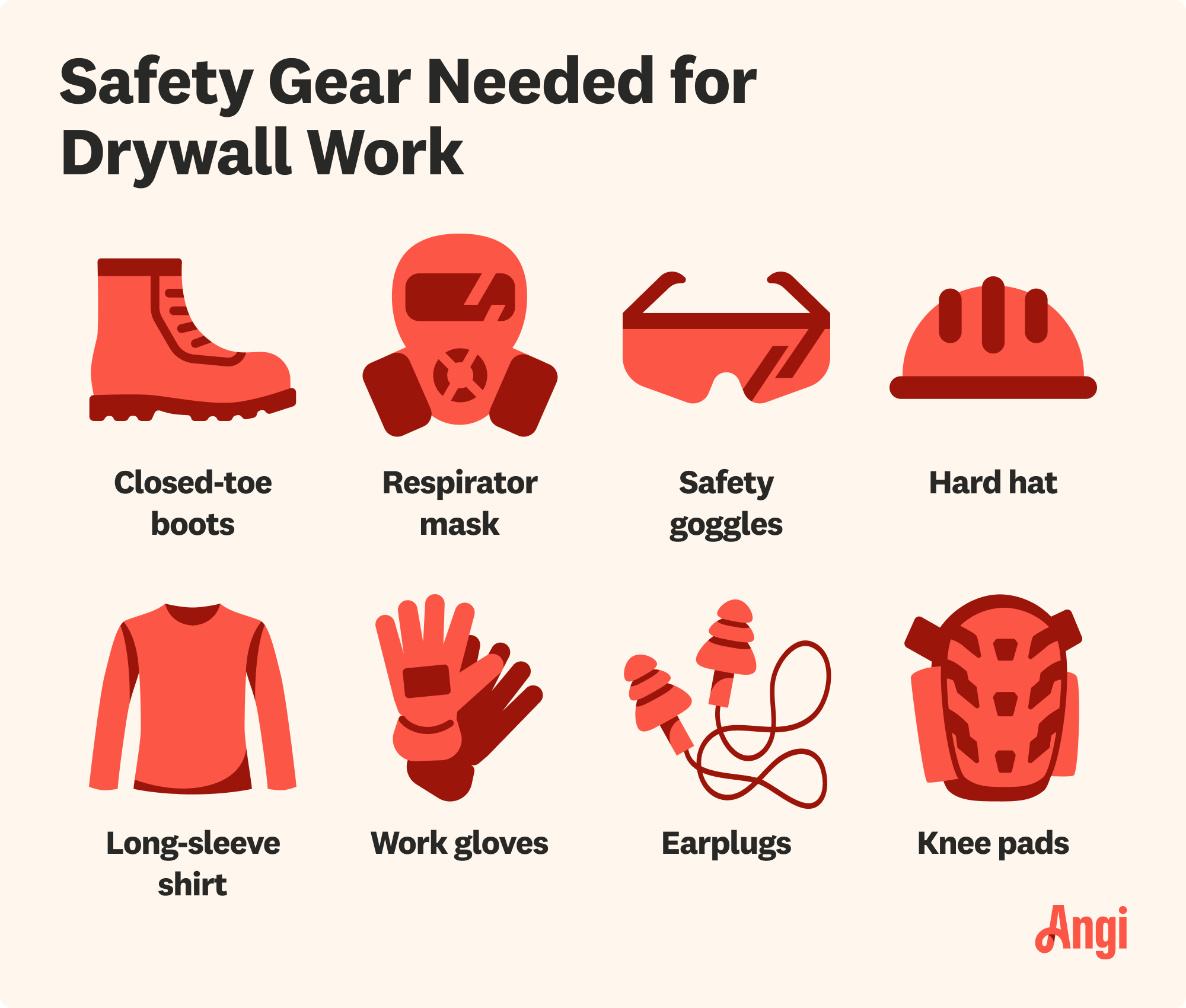
Suit up in an N95, P100, or other respirator mask and a pair of work goggles to protect yourself from fine particle dust. Then, you can use either a sanding block or a sanding screen on a drywall sander to sand out the drywall to smooth out any bumps or other imperfections.
A sanding block will take more time to sand the wall, but it costs less than buying or renting a drywall sander. After sanding, your freshly drywalled corner is ready for primer and paint.
DIY vs. Hiring a Pro
Finishing corners with drywall yourself costs up to $450 or more, depending on how many drywall sheets and how much joint compound you need, plus the cost of drywall tape, screws, and a sanding block. If you don’t have a mud pan or drywall knife on hand, the cost will increase by another $15 to $30. If you want a drywall sander to make the final sanding process easier, expect to spend an additional $100 to $150.
If you want a good finish on your wall, it's absolutely worth it to pay for professional taping and mudding. Many DIYers are tempted to pay someone to hang the drywall and do the rest themselves, but this is one area where a skilled contractor can make a huge difference.
By comparison, hiring a pro for drywall installation costs $990 to $3,200, which includes the cost of materials and labor to drywall an entire room, corners and all. You could save your long weekend for barbecuing and family fun rather than watching joint compound dry. Plus, the corners will have that seamless finish without the hassle. It’s worth the investment to leave this job to a local drywall installer.
Frequently Asked Questions
To hide drywall edges, you need to properly apply drywall tape and multiple layers of joint compound. These materials hide the seams between drywall sheets and fill the holes from drywall screws, leaving behind a smooth, flat finish to paint over. Apply joint compound smoothly, and finish the job by sanding the walls to make sure you fully hide drywall edges and other imperfections.
Yes, it matters which side of drywall you use. One side is smooth, and the other is rough. The smooth side should be facing outward, toward the room, while the rough side should be hidden and facing the studs and framing of the house. The smooth side will be easier to apply tape, joint compound, and, later, paint to.



